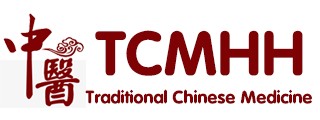NAME
YIFENG
LOCATION
Behind the earlobe, between the ramus of the mandible and the mastoid process, in the depression just superior to the palpable transverse process of the first cervical vertebra.
Note: fold the earlobe forward to reveal this point.
In the depression between the mastoid process and the mandible, behind the earlobe.
Located halfway between the tip of the mastoid process and the angle of the mandible.
Posterior to the earlobe, in the depression between the mastoid process and the mandible.
NEEDLING
Perpendicular insertion, directed towards the opposite ear, 0.5 to 1 cun.
Caution: if the needle is directed too anteriorly or posteriorly, pain will ensue and may cause discomfort on opening and closing the mouth for some time after the treatment.
Slanted insertion, for deaf-mutism, needle pointed in a medial downward direction, 1.5 to 2 cun. Sensation: local distention and soreness, sometimes extending toward the pharynx causing a constricted hot feeling
Straight insertion , for parotitis or facial paralysis, needle pointed toward the eyeball of the opposite side, 0.5 to 1 cun. Sensation: distention and pain at the bottom of the ear, sometimes distention and pain extending to the anterior part of the tongue.
Puncture perpendicularly, 0.5 to 1 cun.
Moxibustion is applicable.
Note: open the mouth, insert the needle, then close the mouth. This way you can insert the needle quite deeply.
COMMAND FUNCTIONS
Meeting point of the Gall Bladder channel
ACTIONS
Benefits the ears
Benefits vision
Soothe the ear
Eliminates Wind
Clears Heat
Activates the channel
Alleviates pain
INDICATIONS
Deafness
Tinnitus
Discharge from the ear
Itching inside the ear
Redness, pain and swelling of the ear
Earache
Mumps
Enlargement of the parotid gland
Scrofula
Superficial visual obstruction with visual dizziness
Trigeminal neuralgia
Convulsions (generally with a headache and an arched, rigid back)
Tempomandibular arthritis
Membrane over the eye
Aural vertigo
Hypertension
Sensation of heaviness of the head
Subluxation of the maxilla
Lack of sensation in the face
Neuralgia of the shoulders and scapula
Deviation of the mouth and eye
Loss of speech
Tetany with inability to speak
Lockjaw (Trismus)
Pain and swelling of the cheek
Toothache of the lower jaw
Pain of the teeth and gums
Mania disorder
Clonic spasm
Facial paralysis
Bell's palsy
Deaf-mutism
Sudden mutism
Sore eyes
Blurred vision
Otitis media
Mania with auditory hallucinations
Chronic yawning in infants
Lymphangitis
Likes to stretch, especially children
Swelling of the cheeks
Ptosis of the lower jaw
Frequent yawning in infants
COMBINATIONS
| LI-4 Hegu SJ-21 Ermen | SJ-7 Huizong ST-7 Xiaguan | SI-19 TinggongGB-2 Tinghui Then needle ST-36 Zusanli LI-4 Hegu |
| Purulent ear sores with discharge | Deafness | Deafness due to Qi Obstruction |
| HT-5 Tongli | ST-7 Xiaguan ST-5 Daying SI-4 Wangu | SI-16 Tianchuang |
| Sudden loss of speech | Toothache and tooth decay | Lockjaw |
| ST-4 Dicang ST-6 Jiache ST-7 Xiaguan ST-2 Sibai LI-4 Hegu or N-HN-20 Qianzhong ST-4 Dicang LI-20 Yingxiang | ST-6 Jiache LI-4 Hegu | SJ-7 Huizong |
| Facial paralysis | Parotitis | Tempomandibular arthritis |
| SI-19 Tinggong N-HN-10 Tingcong N-HN-8 Tingxue | ||
| Tinnitus |
CONTRAINDICATIONS
NOTES
This is an essential local point for the treatment of ear disorders. This is the main point for facial paralysis, whether due to External or Internal Wind. It is a major point to clear External Wind.
